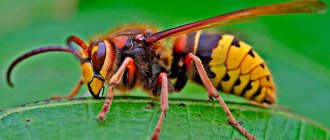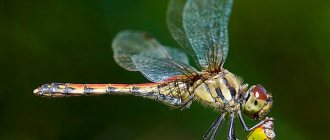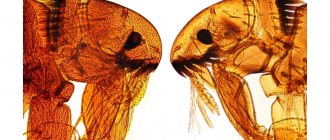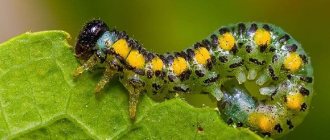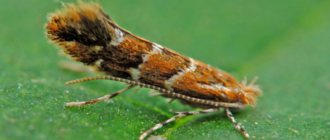Mole - what do we know about this animal? Some people have an opinion about the mole based on famous Czechoslovak cartoons, where he is so small, defenseless and good-natured, doing only good deeds. Others use the cartoon “Thumbelina”, where the “wealthy mole” is a kind of underground Gobsek, imposing, lazy, greedy... And I will not be mistaken if I say that 99% of people have never seen a living mole, and think that this is some kind of underground mouse . Although almost all gardeners have seen the results of his work.
People who are far from gardening believe that the mole is a valuable fur-bearing animal, distributed throughout Belarus. From tanned mole skins (which, by the way, are stronger than rabbit and hare skins) you can make children's and adult fur coats, hats, collars, etc.
Moles are beneficial: they eat the larvae of agricultural pests - chafers, click beetles and others; By making passages underground, they loosen and mix the soil layers, and this increases the penetration of air and moisture into them and helps increase fertility.
Moles bring no less benefit in the forest. Thanks to the passages made by moles, seeds of deciduous trees that fall into the soil germinate earlier than any other vegetation. Thus, favorable conditions are created for the natural regeneration of the forest.
However, the owners of “six hundred square meters” know that the mole is attracted by the unusually generous food supply, which is based on the earthworm, the first producer of humus on the entire planet Earth. He (the mole) destroys our best assistant at a rate of 80 to 150 grams per day.
As you know, moles cause some damage to vegetable gardens, fields, meadows, forest and fruit nurseries. Without consuming plant food, but digging shallow from the soil surface, they disrupt the root system of plants. In addition, they dig up heaps of earth, which leads to littering of meadows and pastures and makes it difficult for machines to harvest hay. Mole holes are used by mouse-like rodents. What do they turn the lawn into? And what feelings does a gardener experience when he sees that his favorite plant, which has survived the harshest winters, is dying because a mole has undermined it?
Thus, the statement about the usefulness of the mole is, to put it mildly, “far-fetched.” It became clear to me that in order to properly organize the protection of your garden plot, you need to know where the mole lives, what it eats, how it reproduces, and what tools are required to catch it. So what should we know about the mole?
Mole. External features
The mole belongs to the class of mammals, the order of insectivores, and the mole family. There are 6 species of moles with 11 subspecies in the CIS. All types and subspecies of moles, generally similar to each other, differ in the size and structure of the teeth, skeleton and some features of their lifestyle.
The animal, widespread in Belarus, belongs to the species European mole, subspecies South Russian mole (Talpa earopaea brauneri Sattnin). The same mole inhabits Ukraine and Moldova.
The appearance of the mole (Fig. 1) is peculiar, which is associated with its underground lifestyle. A short, thick, cylindrical body, pointed at the front and rounded at the back, helps to move better along the passages.
Rice. 1. Common mole (adult animal on the surface of the ground)
Since the mole moves mainly using the front part of the body, it is much better developed than the back part. Its head is, as it were, pulled into its shoulders, so the external signs of the neck are not noticeable and the body turns into a cone-shaped head, ending in a small movable proboscis, on the sides of which there are sensitive hairs - vibrissae.
The mole's forelimbs are especially distinctive. Their feet are wide, spade-shaped, turned outward, have five toes, tightly pressed together, connected by membranes, with long flattened and strong claws up to 8-9 mm long. Bringing both front paws together, the mole digs the soil and pushes the earth to the sides of its underground home. The mole's hind limbs are small, weaker than the front ones, their fingers are without membranes and end in long sharp claws.
When eating and breaking through tunnels, the mole spreads its hind legs wide and rests them on the side walls of the underground canal. The mole has 44 teeth, the upper canines are well developed. Its eyes are the size of a pinhead, poorly developed or completely covered with skin. There are no auricles, although the auditory openings are covered by a fold, the animal’s hearing is well developed (this is facilitated by the high sound conductivity of the soil). He also has a very well developed sense of smell. Tactile hairs are scattered throughout the body, and the mole senses the presence of earthworms through a 60-centimeter layer of soil. A short tail (1.5–2 centimeters), covered with coarse hairs, also helps the sense of touch. Raising its tail up, the mole feels the ceiling of its movement. If the hairs stop touching the ground, the animal becomes alert and often returns along its paths. The main differences between individuals of different sexes: the average length of a male (from the tip of the proboscis to the root of the tail) is 120-190 millimeters, females - 110-150, weight - 95 and 75 grams, respectively.
Young (new) moles differ from adults, in addition to size and weight, in the silvery tint of their skin. By autumn these differences are almost invisible. It is easier to distinguish young moles from old ones by their gray-black fore and hind legs (the legs become lighter over time), as well as by their pointed teeth (in adults they are more or less worn out).
Mole. Habitats
On the territory of Belarus, the mole is widespread and is found in absolutely all regions, inhabiting a wide variety of places.
The mole lives in meadows (floodplain and upland), forests (young birch trees and deciduous shrubs are more attractive), but prefers edges, clearings, thawed areas, places near roads warmed by the sun, forest clearings, as well as vegetable gardens, greenhouses, orchards, parks of populated areas , rights-of-way and slopes of railways, arable land with cereals and other cultivated plants.
The mole avoids continuous forests, pure spruce forests, pine forests growing on hills with sandy soils, very low and wetlands and floodplain meadows overgrown with sedge and other grasses with a powerful root system.
Thus, the mole most often settles in places rich in humus soil, moderately moist and with enough food (earthworms, larvae, insects).
For him, the presence of earthworms in the upper soil horizons throughout the year is important. During drought and severe freezing of the soil (if there is not sufficient snow cover), they sink into deeper layers and become inaccessible to the mole.
As soil moisture decreases, the number of areas inhabited by moles also decreases. The habitat of moles also depends on the amount of precipitation and air temperature. The more significant their fluctuations, the closer the mole moves to the forest, where the soil freezes less in winter and retains moisture longer in summer. In places with rugged terrain, moles can avoid a lack of moisture or its excess, moving from lowlands to higher elevations, and regulate temperature conditions by moving from better heated southern slopes to northern ones.
What is a wormhole
Let's start with the fact that this animal does not really like to look out into the white light (if you can say that about it). The fact is that the mole is blind due to his lifestyle. Its habitat is the upper layers of soil. There he feels quite comfortable and cozy. Before asking how deep the mole's hole is, you need to find out why he needs it. After all, such a “structure” depends on goal setting. Nature does not like empty movements. In any case, the wormhole proves precisely this principle. The animal devotes almost all its time to its work on “underground construction”. He debugs and improves it. A wormhole is a whole system of corridors and rooms, each of which is created for its own purpose. There are passages, a latrine, a nest, and a warehouse. Of course, all terms should be placed in quotation marks. However, their practical load is very similar to that which we put into the corresponding names. For example, a latrine is used by an animal as a “toilet room.” Moreover, in other places the animal does not fulfill this natural need.
Mole. Mole nutrition
In connection with the digging activity of the mole, the question of its nutrition has attracted the attention of many scientists in various countries. As a result of a number of studies, it has been proven that the mole feeds only on animal food, and the plant residues found in its stomach and intestines come either accidentally with the food, sticking to it, or in most cases from the intestines of the earthworms it has eaten. Plant residues are not digested and are thrown away. He searches for food by making new passages and checking old ones. In these passages, earthworms accumulate, which, moving vertically to the soil surface, enter the mole passage and linger in it, as well as the larvae of various insects. When there is a lack of this food, moles eat small vertebrates. In captivity they eat the meat of frogs, rats, etc.
To replenish the energy expended for movement in the ground, the mole is forced to absorb large amounts of food. This is also due to the fact that the mole’s metabolic processes are much faster than those of other mammals. During the day, the mole eats an amount of food that is equal to or exceeds its own weight (from 80 to 150 grams). If the mole is hungry enough, then it eats the worms immediately on the surface of the earth, and when it is more or less full, it takes its prey to the nearest underground passage and eats it there.
A mole can eat 40 grams of worms within half an hour, while its stomach can hold no more than 20 grams; after 5 hours it is again able to eat the same portion. After satiation, the mole falls into a sleepy state for 3-4 hours, after which it begins to search for food again.
Moles eat earthworms from the head, pulling them between the claws of their front paws. As a result, the worms are cleared of the soil, and the intestinal contents are squeezed out of them. Moles do not swallow food whole; they even chew small insects, with the exception of certain types of earthworms.
In winter, moles eat less than in summer. This can be explained by its less active digging activity and lack of food. Therefore, the weight of moles of both sexes is the smallest in winter.
Moles do not tolerate hunger well. They die 6-13 hours after digestion of the absorbed food, unless new food arrives.
Moles drink very often. They usually set up a nesting chamber not far from the water, to which many additional passages are laid. In captivity, moles drink 4-5 times a day. In the fall, they strive to stock up on earthworms for the winter; to do this, they bite off the ends of their heads. As a result, the worms remain alive, but paralyzed. Then the moles stack them in regular rows against the side walls of the passages.
Why does a mole build a hole?
Let's immediately determine that there are many animals with this name. We're talking about everyone for now. They, of course, have their own characteristics. Only in this part of the article will we talk about a certain “middle mole”. Let's consider the functions of his home. There he spends almost his entire life. Note that the depth of a mole's hole is determined by the tasks for which it is dug. In general, it consists of several floors. The first lies ten to twenty-five centimeters from the soil surface. This floor consists of a system of passages. The animal needs them to look for food. After all, it is precisely “hiding” in this layer of soil. The mole descends below for other purposes. He creates the second (in depth) floor in order to breed offspring and preserve his reserves. This is described quite well in a famous fairy tale. The mole's hole, as shown there, is its warehouse, home, place for hunting, harvesting and... promenade.
Mole. Mole breeding
In Belarus, the mating period for moles begins shortly after the snow melts. In the western and southern regions, pregnant females begin to be seen from April 17, and in the northern regions - from May 5-8. Early and cold spring delays this period, which entails a prolongation of the mating period, birth dates, feeding of the young and their settlement. This leads to the prey of a large number of pregnant and lactating females, and consequently to an overall reduction in the mole population.
The duration of pregnancy in females is 35–40 days. The largest number of pregnant females occurs in May. Most females give birth to 6 cubs. On average, there are about 5 cubs per female.
Females usually have one litter per year. However, on the territory of Belarus, especially in the western and southern regions, it was found that 20–25% of females bear litters twice. The second, summer, offspring occurs from the end of June to the end of July. Signs of a female that has given birth to a second offspring are well-developed mammary glands, nipples (4 pairs of them), around which the hair is wiped. In summer, female fertility is lower than in spring: there are about 4 cubs per female.
Feeding the young continues for about a month. At this time, females often fall into traps. Young moles live peacefully among themselves, but as they mature they become pugnacious. At the age of two months, in the middle or end of June, young moles, the size of which does not exceed 3/4 of an adult animal, begin to be caught in traps. They already lead an independent lifestyle. From the end of June - beginning of July, their mass resettlement begins, which ends by the end of August.
In the first days of settlement, young moles run along the tunnels several at a time. Often young moles can be found on the surface of the earth, where they crawl out through holes in passages or molehills. Sometimes it is possible to catch with one mole trap during the summer, in a course in which all the moles go in one direction, up to 50 or more specimens, of which young animals account for up to 75%.
Moles spread very quickly, as they run along ready-made passages at a fairly high speed—up to 6 m per minute. Research by scientists shows that young moles cover a distance of up to 700 m in 20.5 hours, and adults cover 50 m in 20 minutes. Young moles are more prone to movement than adult moles; the latter do not go further than 400 m in 11 months.
When settling, moles encounter small rivers and streams, which they quickly swim across. According to observations, on the Shchors River a mole swam a distance of more than 30 m in 3 minutes. When swimming, the mole holds its head high above the water and quickly paddles with its front legs from the sides, and with its back legs directly in front of itself, while twisting its entire body to the right and left. The railway is not an obstacle to the spread of moles in Belarus. A nest was found 10 m from the Baranovichi-Slutsk railway. Moles even dig passages under the sleepers for many hundreds of meters, and along the embankments the passages stretch for whole kilometers.
Material prepared by: horticulture specialist Buinovsky O.I.
Like a mole digs the ground
Engineers, as well as biologists, were interested in how a small animal manages to build such a complex structure. It should be noted that the depth of the mole hole sometimes reaches four meters. For comparison, its dimensions are about twenty centimeters. Do you feel the difference? Its structure can be compared to our high-rise buildings or mines. The animal uses almost all parts of its body for construction. It is equipped with naturally powerful front paws with claws. They are what frighten casual witnesses of his rare appearance on the surface. The animal uses them to scrape away layers of soil. They just need to go somewhere. In order to remove excess “building material”, the animal makes molehills. These are small exits to the surface through which it pushes soil. This is done with the head. When the corridor becomes too long, the animal clogs up the used hole and digs a new one. And a person sees piles of earth on the surface - the results of the mole’s work. You just can't find the entrance there. The animal hides it cunningly enough so as not to be in danger, and to save its offspring.
Burrow length
People, considering the performance achieved by this small builder, focus on the depth of the structure. But there is a more interesting factor that may capture the imagination. Agree, many people can bury themselves four meters into the ground in a straight line. But building tunnels whose length is many times greater than your size is a huge job. So, this figure can reach up to three hundred and sixty meters (for a mole rat). And it is still unknown whether this is a record. The fact is that many species of moles have not been thoroughly studied. Science knows only general information about them. No one measured the length and depth of their holes. These include, for example, shrews. They are much smaller than moles. They can live unnoticed “under your nose” (in your garden). By the way, shrews are considered useful. They loosen the soil and eat pests.
Interesting facts about wormholes and more
Let's start not with the house, but with the “appearance”. Scientists have found that the animal has an unusual coat. Its fur grows straight. This is designed so that it does not interfere with his ability to change the direction of movement in narrow passages. The wool lays quite calmly both forward and backward. But, due to constant friction, the fur coat quickly deteriorates. The mole might just be bald. Nature arranges it in such a way that it sheds up to four times a year. It is very difficult for predators to hunt underground inhabitants. It is known that they are able to run along their passages at a speed of more than twenty-five kilometers per minute! Agree, it's very fast. By the way, such high-speed movement also has a negative effect on the fur coat. The mole builds storage rooms on several floors. Researchers found caves with both roots and worms. They were folded separately. The animal does not mix different types of food in one room.
Methods to avoid when fighting moles
Some methods of controlling moles used by summer residents are completely ineffective and inhumane. Many gardeners have long abandoned these types of pest repellents.
Destruction of moles using water
Stories about the destruction of moles by flooding passages with water are more likely to be myths than real events. This method is more likely to attract pests to a summer cottage, since a large amount of moisture helps attract earthworms. It is possible that several animals can be destroyed, but the consequences may be completely opposite to expectations.
Destruction of moles with the help of cats and dogs
If no chemicals were used to control pests, you can use a pet. The main thing is to attract the animal’s attention to the pest’s hole. The hunting instincts of cats and dogs are tripled so that they react to every suspicious rustle. When you see the soil moving, call your pet to this place. Perhaps he will be able to catch an underground inhabitant.
